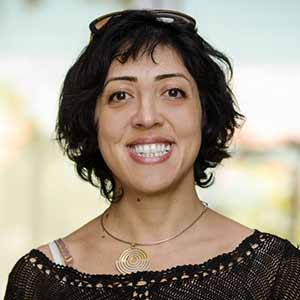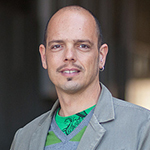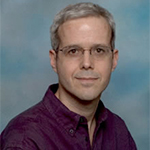Qualcomm Institute Hosts North American School of Information Theory
Published Date
By:
- Tiffany Fox
Share This:
Article Content
For the first time, the North American School of Information Theory (NASIT) will be held at UC San Diego, with more than 100 graduate students, postdoctoral students and leading researchers expected to convene for four days of lectures, discussions, tutorials and networking events.
The eighth annual NASIT is sponsored in part by the Institute of Electrical and Electronics Engineers (IEEE) Information Theory Society, and will be held from Aug. 10-13 at the Qualcomm Institute’s (QI) headquarters in Atkinson Hall.
Information theory is a branch of applied mathematics and electrical engineering that seeks to quantify information. NASIT’s focus is on teaching students the theories and tools they need to solve a wide variety of research problems pertaining to large amounts of information.
This year, NASIT features lectures and workshops by professors from Stanford, the University of Southern California, Carnegie Mellon and UC Irvine on a wide range of topics, including managing signal interference and optimizing data analysis, channel models for biological communications, constrained codes for multilevel flash memory and the IPython Scientific Computing Environment.
In addition, UC San Diego Professor of Electrical and Computer Engineering (ECE) Paul Siegel will present the Padovani Lecture on “Constrained Codes for Multilevel Flash Memory.” In a departure from past versions of NASIT, an additional day will be devoted to a preview of 5G (fifth-generation) wireless technologies – including information theoretic concepts of 5G – from the perspective of researchers at major telecommunications companies such as Samsung, Qualcomm and Ericsson.
For a full schedule, visit nasit15.ucsd.edu.

Tara Javidi
Tara Javidi, associate professor of ECE and a member of the NASIT organizing committee, says that while information theory has traditionally held an influence in the field of communications, “it’s now being studied and used by a larger group of people working in a variety of fields, from networking to data science to machine learning and even biology and the social sciences.”
Social scientists, for example, are increasingly using information theory and applications as they gain greater access to “big data,” says ITA-affiliate and ECE Professor Massimo Franceschetti, who is also on the NASIT organizing committee.

Massimo Franceschetti
Adds Franceschetti: “Social scientists must test hypotheses and discover the right answers from data, and now they have access to huge databases. The topics being presented at NASIT are not directly related to the social sciences, but they will present a set of new techniques that people are using in that community – techniques that you won’t be able to find in books.”
“We’re trying to attract the best students in a broad range of disciplines – not necessarily only from electrical engineering and information theory per se, but also applied communications, optics and computer science,” adds ITA Director and NASIT organizing committee member Alon Orlitsky. “Generally speaking, we want people to learn about important and emerging topics in information theory. We’re hoping that more and more students turn their heads toward information theory and help our community grow and make a greater impact.”

Alon Orlitsky
Although registration for NASIT is now closed, any student who is interested in attending is invited to contact Gabrielle Coulousi at gcoulousi@ucsd.edu to make arrangements to attend. The event will also include a discussion on “Mentoring and Success” by UC San Diego Associate Professor of Bioengineering Todd Coleman, a banquet and a social event.
“My Ph.D. students really like to attend NASITs,” says Javidi. “This is the IT Society’s primary method to reach out to the student population and best serve and educate them. It’s a way for the Society to show students the paths available to them to grow as researchers and build their careers.”
Share This:
You May Also Like
Stay in the Know
Keep up with all the latest from UC San Diego. Subscribe to the newsletter today.



